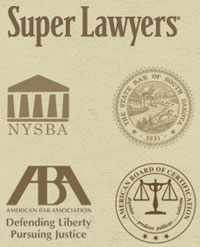On Monday, Jan. 9, The U. S. Supreme Court denied the Petition of a Miner County South Dakota farm couple who were fighting a USDA wetlands designation. USDA enforces rules in which it declares as “wetlands” farmland that has been converted by a farmer from wetlands to arable working land. When such a federal designation is made the farmer loses his right to participate in USDA programs and benefits. Under USDA maps about two thirds of North Dakota, one half of South Dakota and the western part of Minnesota is covered by prairie potholes and wetlands.
The interest group representing the Miner County farmers had called this so-called swampbuster action by the department of agriculture a “phony wetlands designation.” The group’s advocacy on behalf of the Miner County farmers was however weak. The group did not use any experts in its challenge to the designation and appeared uninformed on the methods used by the USDA to designate the Miner County land as wetlands.
In the government’s brief before the Supreme Court the government pointed out that the petitioners neither cross-examined the USDA witness nor offered a competing definition of a local area to use as a comparison site. The landowners separately argued in their Petition that USDA violated the US Constitution by selecting a comparable wetlands site without giving petitioners notice and an opportunity to be heard. However the landowners had not presented this argument in the lower courts.
The Miner County couple’s challenge was timely because of problems with the USDA wetlands process. Nevertheless the landowner’s argument was not based on a strong set of facts. But because of the continuing problems with USDA rules on wetlands designations several congressman introduced a bill amending the swampbuster law.
This wetlands bill, introduced in June 2016, was not acted upon and has had no hearings in Congress. In addition, the new bill was not actively pushed by its sponsors. The proposed amendments have merit and should be actively supported by agriculture interest groups. The proposed reforms do not prejudice proper environmental stewardship of the land. This bill should have bipartisan support. The bill, although now caught in no-man’s-land because of a lack of interest, would require the USDA to make a decision on a piece of property as either wetlands or not wetlands within 60 days of noticing the landowner. The proposed bill also allows for quicker and easier access to federal courts without going through a lot of bureaucratic hearings. The amendments state that the USDA has the burden of proof on any claim that the property in question is a wetlands. The proposed amendments also give the landowner the right to obtain technical assistance early on in any process in order to timely oppose a claim of wetland delineation.





